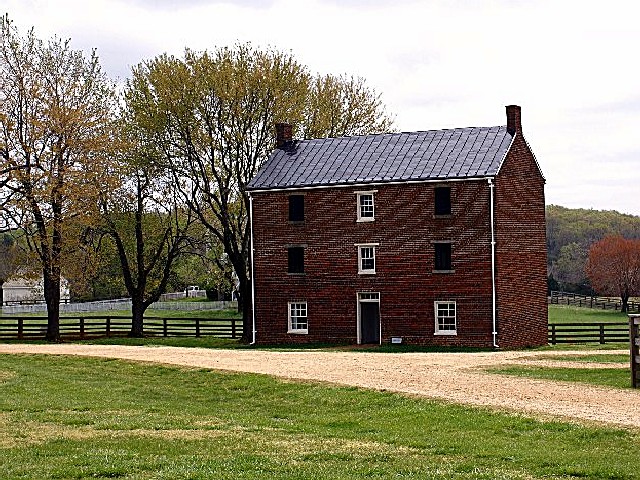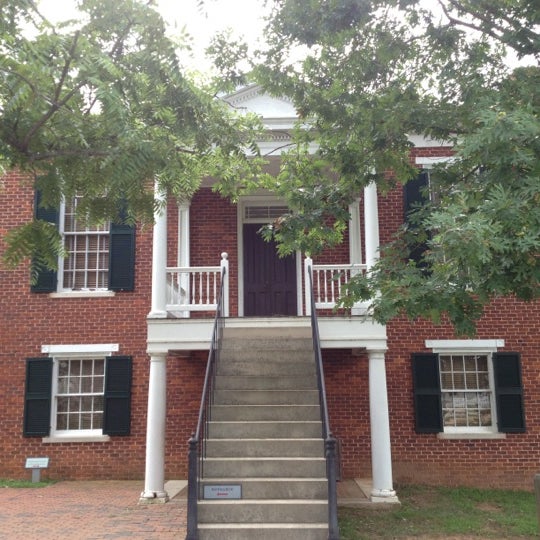Table Of Content

Appomattox Court House, in the American Civil War, site in Virginia of the surrender of the Confederate forces to those of the North on April 9, 1865. After an engagement with Federal cavalry, the Confederate Army of Northern Virginia was surrounded at Appomattox, seat of Appomattox county, Virginia, 25 miles east of Lynchburg. Three miles to the northeast, at the former county seat, known as Appomattox Court House, Gen. Robert E. Lee surrendered to Gen. Ulysses S. Grant, thus effectively ending the Civil War. In 1954 the entire 968-acre area was designated a historical park. The Appomattox Court House National Historical Park is the preserved 19th-century village named Appomattox Court House in Appomattox County, Virginia. The village was named for the presence nearby of what is now preserved as the Old Appomattox Court House.
The American Civil War Museum–White House of the Confederacy
The phenomenon was not limited to the upper echelons – soldiers of all ranks from both armies tried to take a piece of their experience home with them. Northerners bought Confederate dollars from the Rebels, and soldiers tore up their own regimental flags as souvenirs. The surrender was a highly emotional affair for the participants, many of whom had been fighting for four years. Soldiers on both sides cheered and cried – often at the same time – upon hearing the news. On April 8, the Confederates discovered that the army’s escape was blocked by Federal cavalry.
Appomattox Court House Battlefield
The Confederate commanders decided to try to break through the cavalry screen, in the hope that the horsemen were unsupported by other troops. Grant anticipated Lee’s attempts to escape, however, and ordered two corps (XXIV and V) under the commands of Maj. Gen. John Gibbon and Bvt. Maj. Gen. Charles Griffin to march all night to reinforce the Union cavalry and cut off Lee’s escape. The McLeans left Appomattox Court House and returned to Mrs. McLean's Prince William County, Virginia estate in the fall of 1867. When Wilmer McLean defaulted on repayment of loans, the banking house of Harrison, Goddin, and Apperson of Richmond, Virginia brought a judgment against him, and the "Surrender House" was sold at public auction on November 29, 1869. The house was purchased by John L. Pascoe and apparently rented to the Ragland family formerly of Richmond.

Civil War and further decline
The event was attended by an audience of approximately 20,000.Click here to View a PDF File of the The Timeline of the McLean House. On April 10th 1940 Appomattox Court House National Historical Monument was created by Congress to include approximately 970 acres. In February 1941 archeological work was begun at the site, then overgrown with brush and honeysuckle. Historical data was collected, and architectural working plans were drawn up to begin the meticulous reconstruction process. The whole project was brought to a swift stop on December 7, 1941 with the bombing of Pearl Harbor by Japanese forces causing the United States entry into World War II.
In 1933, the monument site was transferred from the War Department to the Department of the Interior. A 1939 Congressional act authorized acquisition of additional land, and in 1940 Appomattox Court House National Historical Monument was created by the Secretary of the Interior. Around this time, interest in restoring the village abounded, probably influenced by recent work at nearby Colonial Williamsburg. Following World War II, restoration and repair focused on the thirteen historic buildings and restoration of historic fields and fences. From 1949 to 1968, the National Park Service also reconstructed fourteen buildings, including the McLean House.
A private effort to commemorate Appomattox Court House for its association with the Civil War was begun in the late 1800s by the Appomattox Land Company under the leadership of General S.S. Burdette. However, in 1891, the centerpiece of the commemorative effort, the McLean House, was sold to another group of investors. Following dismantling of the house in 1893, the building lay in piles rotting near its original site. Plans to create a memorial and park languished until 1893, when ten commemorative iron tablets were erected. In 1930, the War Department was authorized to acquire one acre of land to erect a monument on the site of the burned courthouse.
The McLean House - Site of the Surrender
The village itself began as the community of Clover Hill, which was made the county seat of Appomattox County in the 1840s. The village of Appomattox Court House entered a stage of decline after it was bypassed by a railroad in 1854. In 1930, the United States War Department was authorized to erect a monument at the site, and in 1933 the War Department's holdings there was transferred to the National Park Service.

Battlefields Educators Login
2023 Sweeney Summer Concert Series - Appomattox Court House National Historical Park (U.S - National Park Service
2023 Sweeney Summer Concert Series - Appomattox Court House National Historical Park (U.S.
Posted: Tue, 13 Jun 2023 07:00:00 GMT [source]
It was in these fields and hills that the respective armies had their headquarters and camped while awaiting the negotiated terms of the Confederates’ surrender and their eventual release home. When standing at the village and scanning the surrounding hilltops, it’s almost possible to travel back to the time when this area was covered with tens of thousands of battle-weary troops. The Civil War came to Appomattox County in April 1865, when Confederate General Robert E. Lee retreated across Southside Virginia. Following the war, the courthouse building burned in 1892, and the county seat was moved two miles east to Appomattox Station (now Appomattox). The move precipitated a period of decline for Appomattox Court House, with the houses either rented or abandoned.
Edit My Account
Appomattox Court House National Historical Park is comprised of many of the village's original historic structures, along with several reconstructed buildings on approximately 1,700 acres in rural Virginia. The Wilmer McLean home, where the surrender was signed, is open to the public. Begin your visit at the visitor center in the reconstructed courthouse building in the center of the historic village. There you can get information and recommendations for your visit.
Walk through each headquarter’s camp or along the banks of the Appomattox River and search for red-bellied, downy and hairy woodpeckers wherever you hear tapping. This could also lead to white-breasted nuthatches amongst the more numerous tufted titmice and Carolina chickadees. You can also visit one of our nine hiking trails including our interpretive nature trail and pollinator gardens. During spring and fall the treetops support passing neotropical migrants, such as black-throated green and Blackburnian warblers, blue-headed vireos and numerous blue-gray gnatcatchers.
Play a Game of Civil War Base Ball at Appomattox Court House NHP - Times Virginian
Play a Game of Civil War Base Ball at Appomattox Court House NHP.
Posted: Wed, 28 Jun 2023 07:00:00 GMT [source]
With over a dozen buildings, a museum, theater, hiking trails, driving pull offs, and a park store, we suggest allowing at least two hours for your visit. After Lee's surrender, the Army of Tennessee remained in the field for over two weeks, until Johnston finally surrendered the army and numerous smaller garrisons to Maj. Gen. William T. Sherman on April 26. Johnston's surrender was the largest of the war, totaling almost 90,000 men. In summer 1861, Wilmer McLean and his family lived in Manassas, Virginia. His house was on the outskirts of the battlefield, and was used as Gen. P.G.T. Beauregard’s headquarters. After the battle, McLean began selling sugar to the Confederate Army, and moved to Appomattox Court House where he believed he would be able to avoid the fighting and the Union occupation, which impeded his work.

No comments:
Post a Comment